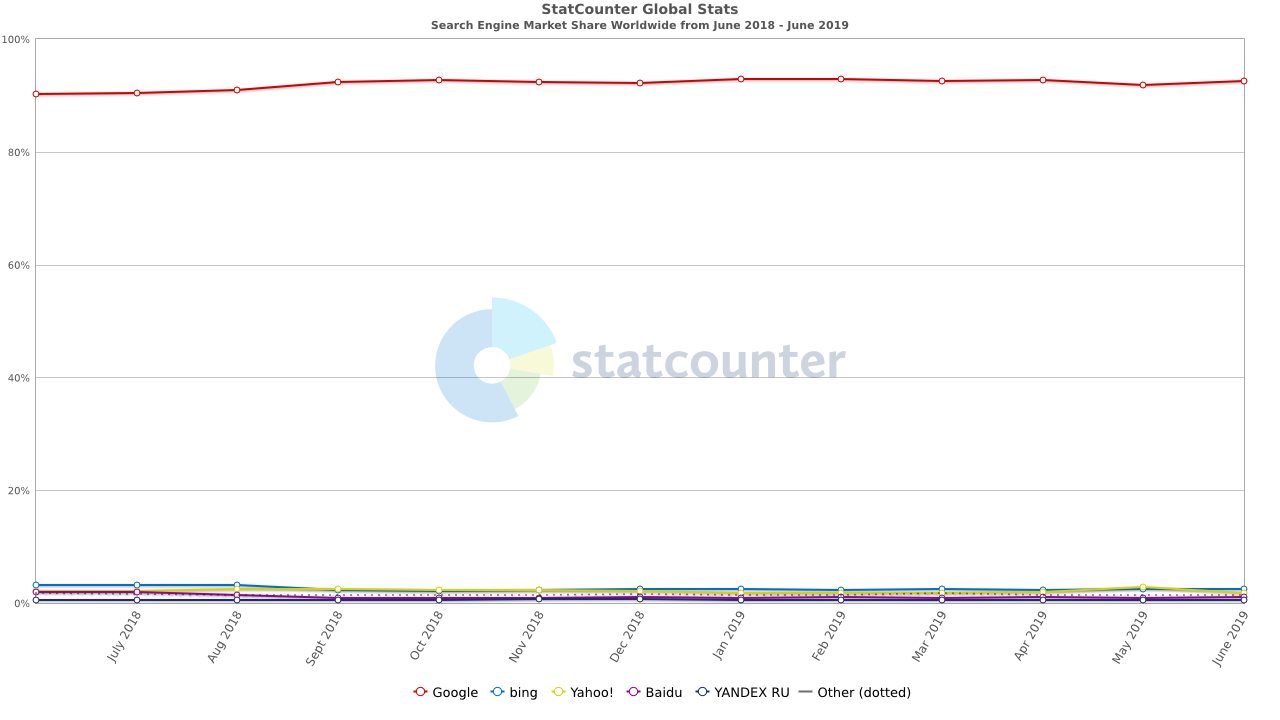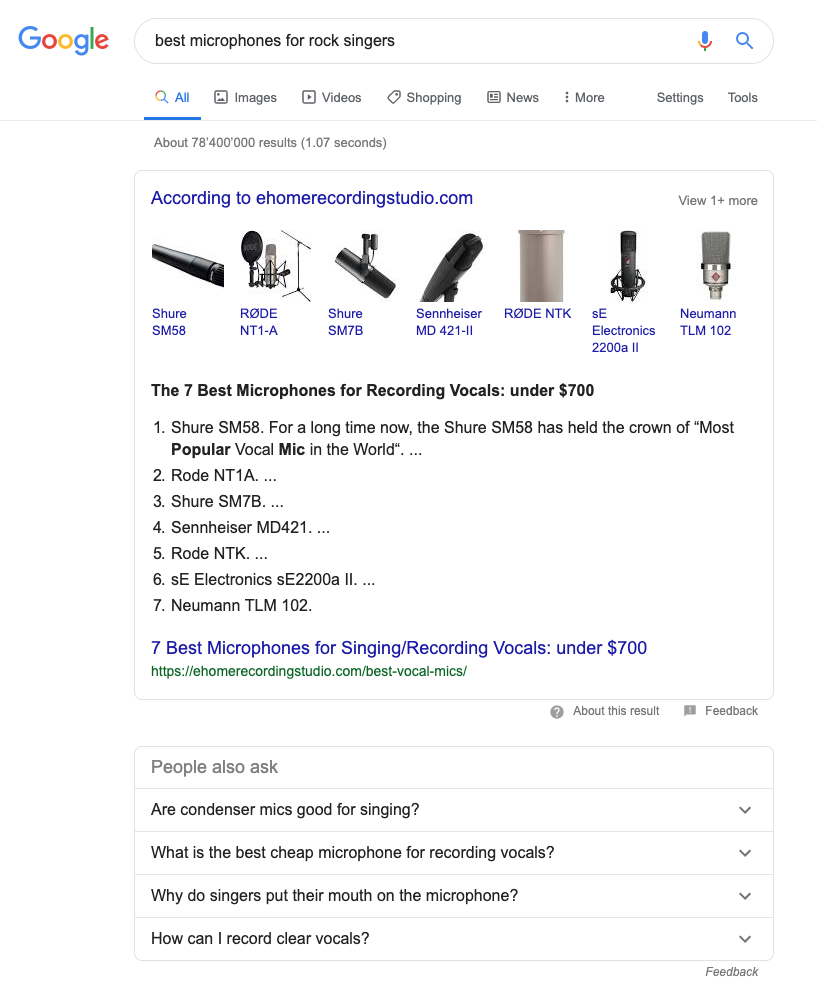
How to build a successful website in Switzerland
In this article, you’ll learn why it’s essential for every company to have a website, what a website even is (in detail) and how you can build one.
Along the way, you’ll find various links to relevant content. We highly recommend you check them out or save them for later. There are some great pieces of advice, interesting case studies, wild strategies, and many knowledge-bombs at your fingertips.
On this page, you’ll find all our answers to the most important questions every marketing manager, company owner or startupper might ask himself concerning web presence in Switzerland:
- Do I really need a website?
- What is a website anyway?
- And the web?
- How do people find my website?
- How to build a website?
- What does it take to build a website?
- When should we plan a website makeover?
Do I really need a website?
Big, fat YES! That’s the short version.
But let’s dive deeper. There are various reasons why you really need a website. We’ll explore some of them with the use of interesting statistics:
56% of consumers don’t trust a business without a website
Maybe people see your ads in newspapers or on the TV screen. Then they try to look you up online and… nothing. Many people, especially the younger generation, will only interact with a company if there’s a website. Why bother, if not? There are enough other options. And after all, do you really exist, if you aren’t on the internet? ?
98% of business owners say a facebook page is not a substitute for a website
Maybe you have your Facebook site where you publish your newest products, opening hours and pictures of the pretty faces in your team. That’s good already, but unfortunately not good enough, according to today’s standards.
The average revenue for a small business is $3.6 million, but the average revenue for a small business with a website is $5.03 million
Let that one sink in… small businesses that have a website do almost DOUBLE the revenue than the ones who don’t.
92% of searchers will pick businesses on the first page of local search results.
Imagine not even being on the radar for 92% of the population. Imagine all the business you’re losing out on. And this doesn’t include all the online marketing opportunities you miss.
These are just some of the measurable impacts not being online may have. Good client service, for example, can’t be measured like that. But think about a website you visited and you were greeted by a small chat window. How amazing is that? 24/7 available client service! Or when you look something up online and Google throws the phone number, opening hours and all other key information right at you. And have you ever seen Google’s rating system? If you are searching for a barber and there are two in your area, one has a single star and the other one five stars, it’s obvious where you book your appointment.
Your clients deserve the same simplicity and transparency in their interactions with you.
There is no doubt, you need to have a strong website and dominate the internet.
What is a website anyway?
A website is a collection of files that are stored on a so-called server (the real word is hosted). A server is a huge computer with vast storage capacity. Its sole purpose is to deliver – or serve – the stored files to the user.

Most people don’t have their own servers at home. Companies like Hostfactory, Hoststar or Infomaniak own huge data centers. Big rooms that are full of servers they rent out. These companies make hosting a website accessible to the public. To put things into perspective, more than 500 exabytes of data are transferred through servers all over the world each month. That’s 500’000’000’000 GB.

For security reasons, most data centers are not accessible by the public. In Switzerland, we take it up a notch. Most of our data centers are hidden deep in mountains of the Alps, behind thick lead doors. Very James Bondesque, isn’t it?
The web
To make the stored files accessible for people all over the world, we use this little thing called: the internet. Let’s break it down:
Internet: The biggest world-wide communication network of computers. The internet offers many services like the World Wide Web, email and instant messaging.
World Wide Web: Wait, that’s not the same? Nope… The World Wide Web (or www) is that part of the internet that contains websites. Our blog you’re reading right now is part of the www.
Email: The internet allows you to send these super modern letters to the other side of the world almost instantly. Take that postal office.
Instant messaging: Email, but even faster. Like, instantly. Also, more than two people can connect at the same time.
Every single device that is connected to the internet has a unique IP (Internet Protocol) address. Even your smart fridge. It’s like a phone number. It looks like 192.168.67.98. Not really convenient. To make it easier for people to access the stored files, the domain name system (DNS) was created. With the DNS names get assigned to these IP addresses. For example, ours is enigma.swiss, then there is google.com, bern.ch, and so on.
When you type “enigma.swiss”, your browser skims a huge database. Once it identifies the related IP address, it takes you to the right server.
That’s how you browse the internet: you connect remotely to servers all over the world.
How do people find my website?
In the early days, people needed to know the exact address of every website they wanted to visit. Of course, there weren’t that many so it probably wasn’t too hard.
Search engines
But then the first search engines were invented. Based on a search term the user enters, a list with the corresponding files appears. It was a game-changer! Ever since, companies battle for the top position on these search engines. This battle is called Search Engine Optimization, or SEO in short.
Contrary to popular belief, Google wasn’t the first one. “Archie”, “Excite” and “Webcrawler” were there before and even Yahoo is older than Google. But nowadays it makes sense to focus the available resources on Google only.

Google works in three basic steps, very well explained by the mighty Google itself:
Crawling: The first step is finding out what pages exist on the web. There isn’t a central registry of all web pages, so Google must constantly search for new pages and add them to its list of known pages. This process of discovery is called crawling. Some pages are known because Google has already crawled them before. Other pages are discovered when Google follows a link from a known page to a new page. Still, other pages are discovered when a website owner submits a list of pages (a sitemap) for Google to crawl. If you’re using a managed web host, such as Wix or Blogger, they might tell Google to crawl any updated or new pages that you make.
Indexing: After a page is discovered, Google tries to understand what the page is about. This process is called indexing. Google analyzes the content of the page, catalogs images and video files embedded on the page, and otherwise tries to understand the page. This information is stored in the Google index, a huge database stored in many, many (many!) computers.
Serving: When a user types a query, Google tries to find the most relevant answer from its index based on many factors. Google tries to determine the highest quality answers, and factor in other considerations that will provide the best user experience and most appropriate answer, by considering things such as the user’s location, language, and device (desktop or phone). For example, searching for “bicycle repair shops” would show different answers to a user in Paris than it would to a user in Hong Kong. Google doesn’t accept payment to rank pages higher, and ranking is done programmatically.
The only step visible to the user is the serving. Robert searches: “best microphones for rock singers”. Google will then list the best page for Robert’s search input.

The list on this page is so well made that Google even shows it in the form of a card at the very top. Who would scroll past that, right?
As we all know, nobody goes to the second page of Google, so you should at least rank on the first page. It’ll be hard to get traffic from Google otherwise.
To get to the first page, you need to make Google fall in love with you. And Google is no easy catch! Especially with all the competition that is out there. Your website needs to be top-notch in technic and semantic. But off-site SEO, like other websites, should be linking to your, is just as important. The better Google likes these websites, the better for you.
This method to determine if the content is “good” has its roots in the academic world. The more an academic paper was cited in other papers, the more reputable it had to be.
Paid ads
If you want to be at the top immediately, there is something you can do: pay. Google offers ad space at the top of the search results for specific keywords for the highest bidder.
Although you can just pay your way to the top you shouldn’t neglect your SEO. A combination of both, with a focus on different goals, is healthy.
Backlinks
Google, or any other search engine, isn’t the only to get traffic to your page. A huge part of traffic will be sent through other websites, referring to yours. This is called a backlink. If you publish an article on The Huffington Post, you link the article to your website. You obviously want people to know it’s your article. Same if you post an answer in a forum. Let the readers know about your website. If they liked what you wrote, they’ll love to pay a visit!
Social media
Social media is also a great source of traffic. You might post pretty pictures on Instagram. Witty tweets on Twitter. Valuable articles on LinkedIn or Facebook. No matter the platform, always link to your website. If someone likes your content, they can hop over to get more! No googling, no typing. But how can you create content that people actually want? Have a look at this blog article where we present our in-house approach of content creation.
Now you know the basics of the world wide web. You’re convinced you need a website. Now comes the real challenge: Building it.
How to build a website?
There are different approaches, each one with their upsides and downsides. In another detailed article, we run you through four different ways to build a website:
DIY
Business card
Experience website
Growth-driven website
Quick summary
DIY: The cheapest and also the most limited option out there. The monthly cost to have your website online is less than one lunch. You have to work with a predesigned template though. This option leaves very little room for uniqueness.
Business Card: As the name says, this website is designed to let the visitor more about you. It’s mostly very short and just provides the key information about your WHY, what you do and who you are.
Experience website: These are mostly really well designed and make you go “wooooow”. Often they look futuristic and have a great story to them.
Growth driven website: They may look like an experienced website, but they have real lead-generating muscle behind them. With the use of clever storytelling, inbound marketing, and other tools, the leads will be pouring in constantly. High quality and ready to do business.
Most of these websites require quite some coding skills. If you don’t know coding you will need to hire someone who does. But to create a high performing website it’s not enough to just know how to code. Vast knowledge about branding, marketing and strategy is necessary as well.
What does it take to build a website?
A website is way more than just putting an idea into code. There are a lot of steps to go through. And actually, coding is only a rather small part of the project. There’s a lot of work to do before. And also after. So, what are the steps needed? How long does it take from scratch to an amazing website?
There are three main stages in a website project:
Strategic phase: The foundation of every successful website is a great strategy. Start with the reason, WHY you want to have a website. As Simon Sinek said, people don’t buy what you do, they buy WHY you do it. Then find out everything you can about your audience. Who do you want to talk to? You’ll adjust language, design, and experience according to that. To help you, create a buyer’s persona: a fictional character that represents your ideal customer. Mostly they have quite obnoxious names like Musical Maynard to make them more memorable and show their primary character trait.
This touches just the base. To be successful you need a much more detailed strategy.
Visualization phase: With your persona and strategy in mind, the next step is to create visuals. We all like things that look pretty. We highly recommend hiring a professional graphics design team for this task. They know it’s not just about the way it looks but also how it feels for the user. Where the buttons are located, what navigation to use and all the other important UX best practices.
Coding phase: The coder puts it all together. He implements the design pixel perfect. He gives life to your website.
And actually, it doesn’t stop there. In this detailed article, we run you through all the phases in detail so you know what it really takes to build a website. The article includes a free template to plan your website project.
When should we plan a website makeover?
Our world is everchanging. That’s especially true in technology and the internet. What is a trend today will be horribly outdated next year. Sadly, a website has quite a low life expectancy. An average 2-4 years, actually. Of course, age isn’t the only indicator of an outdated website. There are a handful of control points to watch:
Speed: People want their things FAST. If your website doesn’t load in three seconds or less, people will leave. There are many services available that let you measure your website speed. If it takes more than three seconds, you might be missing out on a lot of traffic.
Measure your speed here: Google Speed Test
SEO: Search engine optimization. Remember: Make Google fall in love with you!
Content flexibility: Don’t just throw plain text at your visitor’s face. Mix it up with videos, infographics, and all the other pretty visualizations you can think of.
Mobile responsiveness: About half of all website traffic comes from mobile phones. Having a website that is optimized for small screens is essential. Phones, tablets, phablets, and computers all have different screen sizes. That’s why it’s your best bet to code the website to be responsive – meaning it adapts to the screen size fluently. That’s way better than coding a hundred different websites.
User experience: Is everything easy to find? Is navigation made simple? Are you following the best practices? If a user scrolls all the way to the bottom of your website but doesn’t find an address he’ll leave frustrated. The next website will probably have it…
In this detailed article, we’ll go more in-depth on the topic. We even have a free scorecard to help you go through your assessment. Follow our explanations to know if your website needs help or if it’s still efficient.
Conclusion
Having a website is a must. How you create it and how you keep it up to date is your choice. Keep in mind, once your website is up and running, it’s not time to kick back. Arguably the most important steps are still ahead! You need to constantly analyze the behavior of your visitors and adjust the website accordingly. But using some smart tools and Atomic Design, you’ll be quick and it might even be fun. If you ever need any help, we’re happy to lend a hand.
Oh, and remember to keep exploring!